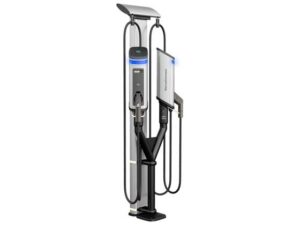Lead acid batteries have long been a staple in the world of energy storage. But what’s the deal with lead acid batteries and the environment? Well, the answer may surprise you. Although lead acid batteries are widely used due to their reliability and cost-effectiveness, they pose significant environmental challenges. From the extraction and production of lead to the disposal of used batteries, the environmental impact can be substantial. In this article, we will delve into the intricacies of lead acid batteries and explore potential solutions to minimize their detrimental effects on the environment. So, let’s dive right in and uncover what’s really going on with lead acid batteries and the environment.
What’s the Deal with Lead Acid Batteries and the Environment
Lead acid batteries have been around for over a century and have become an integral part of our daily lives. From powering our cars to providing backup power in industrial settings, these batteries have proven to be reliable and cost-effective. However, as we become more conscious of our environmental impact, it’s important to understand the environmental implications of lead acid batteries and how they can be managed sustainably. In this article, we will explore the various aspects of lead acid batteries and their impact on the environment.
Understanding Lead Acid Batteries
Lead acid batteries are a type of rechargeable battery that uses lead plates and an electrolyte solution to store and release electrical energy. They are commonly used in vehicles, backup power systems, and renewable energy storage systems. These batteries are known for their durability, low cost, and high energy storage capacity.
Composition of Lead Acid Batteries
Lead acid batteries are composed of several key components, including:
1. Lead plates: Lead plates are the main active component in lead acid batteries. They are made of lead or lead alloy and provide the surface area for the chemical reactions to occur.
2. Electrolyte: The electrolyte in lead acid batteries is a solution of sulfuric acid and water. It facilitates the flow of ions between the lead plates during charging and discharging.
3. Battery case: The battery case is typically made of a durable plastic material that holds the lead plates and electrolyte in place.
4. Terminals and connectors: These allow for the electrical connection between the battery and external devices or charging systems.
The Environmental Impact of Lead Acid Batteries
While lead acid batteries offer numerous advantages, they also pose environmental challenges due to the presence of lead and sulfuric acid. Here are some key environmental impacts associated with lead acid batteries:
1. Lead pollution: Lead is a highly toxic heavy metal that can have severe health effects, especially on children and pregnant women. Improper disposal or recycling of lead acid batteries can lead to soil and water contamination, posing a risk to both human health and wildlife.
2. Acidic electrolyte: The sulfuric acid used in lead acid batteries is highly corrosive and can cause environmental damage if not handled properly. Improper disposal or leakage of electrolyte can impact soil pH levels, vegetation, and aquatic ecosystems.
3. Energy consumption: Lead acid batteries require energy for manufacturing and recycling processes. The energy-intensive nature of these processes contributes to carbon emissions and can have indirect environmental impacts.
Management and Recycling of Lead Acid Batteries
To mitigate the environmental impacts associated with lead acid batteries, proper management and recycling practices are essential. Here are some key aspects of managing lead acid batteries sustainably:
Battery Collection and Storage
Efficient battery collection and storage systems play a crucial role in preventing environmental contamination. Some best practices include:
– Implementing collection programs: Governments, battery manufacturers, and retailers can collaborate to establish collection programs that encourage consumers to return used batteries for proper disposal or recycling.
– Storing batteries safely: Used batteries should be stored in secure and leak-proof containers to prevent leakage and accidental exposure to the electrolyte.
Battery Recycling Process
Battery recycling is a vital step in reducing the environmental impact of lead acid batteries. The recycling process involves the following steps:
1. Battery collection: Used batteries are collected from various sources, including collection centers, recycling facilities, and authorized retailers.
2. Battery sorting: Batteries are sorted based on their chemical composition, such as lead acid batteries, lithium-ion batteries, or nickel-cadmium batteries.
3. Battery discharging: To ensure safe handling during recycling, the remaining charge in the batteries is discharged.
4. Battery breaking: The batteries go through a breaking process, where they are crushed or shredded to separate the different components.
5. Component separation: The components, including lead plates, plastic cases, and electrolyte, are separated using various techniques.
6. Material recycling: The separated components are processed to recover valuable materials such as lead, plastic, and sulfuric acid.
7. Environmental remediation: During the recycling process, any hazardous substances are treated or disposed of safely to prevent further environmental contamination.
Benefits of Lead Acid Battery Recycling
Lead acid battery recycling offers several environmental and economic benefits:
– Resource conservation: Recycling lead acid batteries helps conserve valuable resources such as lead, plastic, and sulfuric acid. This reduces the demand for raw materials and decreases the need for mining and manufacturing new batteries.
– Pollution reduction: Proper recycling prevents the release of lead and sulfuric acid into the environment, reducing soil and water pollution. It also plays a crucial role in minimizing the carbon footprint associated with battery production.
– Economic opportunities: Battery recycling creates job opportunities and contributes to the circular economy by turning waste into valuable resources.
Sustainable Alternatives to Lead Acid Batteries
While lead acid batteries continue to be widely used, there are sustainable alternatives worth considering. These include:
Lithium-Ion Batteries
Lithium-ion batteries have gained popularity due to their high energy density and longer lifespan compared to lead acid batteries. They are commonly used in portable electronics, electric vehicles, and renewable energy systems. However, it’s important to note that lithium-ion batteries also have their own environmental considerations, including resource extraction and end-of-life management.
Nickel-Metal Hydride (NiMH) Batteries
NiMH batteries offer a higher energy density and longer lifespan compared to lead acid batteries. They are commonly used in hybrid electric vehicles, portable electronic devices, and power tools. NiMH batteries contain less toxic materials compared to lead acid batteries, but proper recycling is still essential to recover valuable metals.
Flow Batteries
Flow batteries are a type of rechargeable battery that uses two liquid electrolytes to generate electricity. They offer high scalability and long cycle life, making them suitable for large-scale energy storage applications. Flow batteries are still being developed and commercialized, but they hold immense potential for sustainable energy storage.
Lead acid batteries have played a significant role in our energy storage needs, but their environmental impact cannot be ignored. By implementing proper management and recycling practices, we can minimize the negative consequences associated with lead acid batteries. Additionally, exploring and adopting sustainable alternatives can help us move towards a greener future. It is crucial for individuals, policymakers, and industries to collaborate in order to ensure the responsible use and disposal of lead acid batteries, ultimately protecting our environment for future generations.
Frequently Asked Questions
What are lead acid batteries?
Lead acid batteries are a type of rechargeable battery that uses a chemical reaction involving lead and sulfuric acid to store and release electrical energy.
How do lead acid batteries impact the environment?
Lead acid batteries can have both positive and negative environmental impacts. On the positive side, they are highly recyclable, with almost all components being recoverable and reusable. However, lead acid batteries also contain toxic materials, such as lead and sulfuric acid, which can pose risks if not managed properly. Improper disposal or recycling of lead acid batteries can lead to soil and water contamination.
Can lead acid batteries be recycled?
Yes, lead acid batteries are highly recyclable. The recycling process involves separating the different components of the battery, including lead, plastic, and sulfuric acid. The lead is then purified and used to make new batteries, while the plastic and acid can be reused or properly disposed of. Recycling lead acid batteries is not only environmentally responsible but also helps conserve valuable resources.
What happens if lead acid batteries are not recycled?
If lead acid batteries are not recycled and instead end up in landfills or are improperly disposed of, they can release harmful substances into the environment. The lead inside the batteries can contaminate soil and water, posing risks to human health and ecosystems. Additionally, the sulfuric acid can cause problems if it enters waterways or leaches into the ground.
Are there alternatives to lead acid batteries that are more environmentally friendly?
Yes, there are alternative battery technologies that are considered more environmentally friendly than lead acid batteries. For example, lithium-ion batteries have become popular due to their higher energy density and longer lifespan. However, it’s important to note that the production and disposal of any type of battery can still have environmental impacts. Proper recycling and disposal practices are essential for minimizing these impacts.
What can I do to ensure the proper disposal and recycling of lead acid batteries?
To ensure the proper disposal and recycling of lead acid batteries, you can start by finding a certified recycling center or collection point in your area. Contact your local waste management authorities or battery retailers for guidance. It’s important not to throw lead acid batteries in the regular trash or recycling bins, as they require specialized processing. By responsibly disposing and recycling lead acid batteries, you can contribute to protecting the environment and preventing the release of hazardous materials.
Final Thoughts
Lead acid batteries have long been a popular choice for various applications, but what about their impact on the environment? The truth is, lead acid batteries pose serious environmental concerns. When improperly disposed of, these batteries release harmful lead and sulfuric acid into the environment. This can contaminate soil and water sources, posing risks to both humans and wildlife. Recycling lead acid batteries is crucial, as it helps prevent the release of these toxic substances. By safely managing these batteries, we can significantly reduce their negative impact on the environment. So, what’s the deal with lead acid batteries and the environment? It’s clear that responsible disposal and recycling are essential to mitigate their environmental harm.



